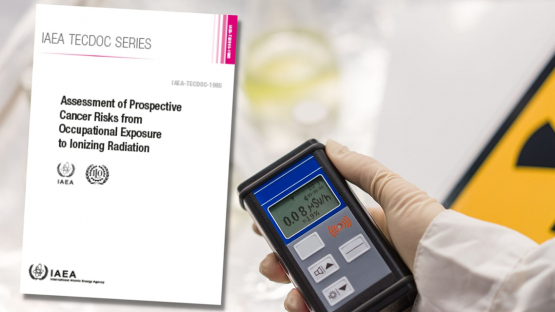Over 24 million people worldwide are monitored due to their potential or actual exposure to ionizing radiation in the course of their work. While such exposure is commonly associated with those working in the nuclear field or dealing with radioactive sources, workers in other professions – such as miners, aircrew, researchers, and healthcare professionals – may also face similar risk hazards for which effective radiation protection measures need to be in place.
To help in managerial decisions related to controlling exposure of these workers, the IAEA has released a technical publication titled Assessment of Prospective Cancer Risks from Occupational Exposure to Ionizing Radiation. It provides specific guidance on how to assess the cancer risks of those associated with exposure to radiation in the course of their work.
“Around the world, millions of people are exposed to natural or artificial sources of radiation. This publication provides specific guidance on assessing health risks linked to such exposures and on decision-making regarding radiation protection optimization in the workplace,” said Jizeng Ma, Head of the IAEA Occupational Radiation Protection Unit. “It provides information on available methodologies to assess cancer risks as well as mathematical models to calculate cancer risk of occupational exposure.”
Cancer risk assessment is the evaluation of various factors that may increase or decrease the likelihood of an individual occupationally exposed to radiation, of contracting cancer. These factors can include the way in which a person is exposed to radiation, the type of radiation, duration of radiation exposure and the person’s age. For example, miners may be exposed through the inhalation of radon in mines, whereas healthcare workers may be exposed to radiation when assisting patients during X-ray imaging.
This guidance supports the IAEA’s efforts to help countries enhance their radiation protection programmes for occupational exposure, through the adoption of structures, policies, procedures, and organizational arrangements that are commensurate with the nature and extent of the risks. The aim is to ensure that the likelihood of exposure is as low as reasonably achievable and within dose limits established either by international standards or included in national legislations.
The publication has been developed in collaboration with the International Labour Organization (ILO). Its release comes ahead of the International Conference on Occupational Radiation Protection taking place in Geneva from 5 to 9 September 2022, where the cancer risks from occupational exposure will be among many other subjects discussed. The deadline for submitting papers for the conference is 18 March 2022.
“The conference presents an opportunity for employers, workers and other stakeholders involved in the implementation, management and development of occupational radiation protection systems to share and discuss world experiences,” said Shengli Niu, senior specialist in occupational health at the ILO Programme on Safety.
A number of other IAEA publications in this area are available online, including the General Safety Guide No.7 on Occupational Radiation Protection, the General Safety Requirement Part 2 on Leadership and Management for Safety and the General Safety Requirement Part 3 on Radiation Protection and the Safety of Radiation Sources: International Basic Safety Standards.





